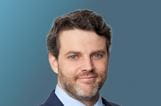European sponsors seek value through complexity amid debt market volatility
Related people
Headlines in this article
Europe’s exposure to the war in Ukraine has hit its syndicated debt markets hard. The flow of funds will return – but in the meantime sponsors are pursuing ever-more complex deals to create value.
Away from infrastructure, the forward view for sponsor-led deal-making in Europe is more challenging – at least for the early part of the year.
The volatility seen across financial markets – driven in part by Europe’s exposure to the war in Ukraine – has seen the syndicated market for leveraged loans largely disappear.
Arrangers, who are already facing challenges in selling down “hung” deals to free up their balance sheets, are finding it almost impossible to price debt amid the threat of an escalation in the conflict and a further deterioration of credit conditions. For financial sponsors, this makes asset values even harder to calculate.
Sponsors expected to assume 100% of market risk on debt
Right now – outside of assets with stable revenue streams and long hold periods – banks will often only underwrite debt packages if the issuer assumes 100% of the market risk. This raises the prospect of a sudden increase in pricing midway through a transaction.
Right now, outside of assets with stable revenue streams and long hold periods, banks will often only underwrite debt packages if the issuer assumes 100% of the market risk.
There used to be a ceiling on how far banks could flex the price of a leveraged loan during the syndication phase, but those days are gone. Ironically, the turning point was the Russian debt crisis in 1998.
This is creating the most challenging conditions for European private equity deal-making in years.
Twelve months ago, the availability of financing was barely given a second thought; sponsors had optionality, costs were low and packages could be arranged at speed.
Financing discussions front-loaded in deal process
Today, debt is having to be put in place by deal teams before many of their investment committees will even entertain a bid.
Earn-outs, vendor loans and rollovers (i.e. where sellers invest a portion of their equity in the PE-controlled acquisition company) are increasingly common as sponsors look to reduce the sums they need to pay.
Without easy access to syndicated debt due to increased risk aversion among banks and weak demand from investors, sponsors are in daily discussions with private credit funds as they look to secure financing.
A clear opportunity exists for direct lenders – awash with capital – to develop strong future pipelines if they can build mutually beneficial relationships.
One area where these dynamics are less significant is in the ESG space. Here, it’s potentially easier to justify a higher equity contribution where the focus of a fund’s limited partners is on social and environmental impact rather than pure financial returns.
More broadly, we also don’t expect the gloomy backdrop to prevail throughout the whole of 2023. The leveraged market is exactly that – a market – and history shows that when it comes back it will be with a bang.
We don’t expect the gloomy backdrop to prevail throughout the whole of 2023. The leveraged market is exactly that – a market – and history shows that when it comes back it will be with a bang.
Market volatility driving more complex deals
Until then, sponsors – who were sitting on more than USD3.7tn of dry powder at the end of November, an all-time high – will continue creating value through complexity, for example by targeting undermanaged carveouts or aggressively going after two or more complementary assets at the same time.
By realising synergies from the outset of a transaction, sponsors are able to make a more compelling case to sellers as well as their own investment committees. But closing multiple contingent transactions is an order of magnitude harder than participating in an auction and executing a leveraged buyout.
It is also more risky – sellers will push for reverse break fees and hell-or-high-water clauses to hold buyers accountable for securing regulatory approvals.
PE sponsors considering wider variety of ownership structures
The trend towards complexity extends to ownership structures, with PE sponsors showing greater appetite for a wider variety of post-closing models including investing in assets via joint ventures with strategics.
The trend towards complexity extends to ownership structures, with financial sponsors showing greater appetite for a wider variety of post-closing models.
This sort of flexibility enables sponsors to put capital to work despite the external headwinds, with deal terms including “put” and “call” options that give sponsors certainty they can get to a control position when market conditions improve.
Antitrust scrutiny of sponsors
More complex deal strategies bring more complex regulatory challenges at a time when both the U.S. Department of Justice Antitrust Division and the Federal Trade Commission have signalled their intent to closely scrutinise PE activity.
We expect further DoJ investigations into “interlocking” directorships among PE portfolio companies (i.e. directors holding concurrent board seats with competitor businesses, where “competitor” is more expansively defined than in the past). We also expect those investigations to look for signs of unlawful information-sharing and coordination.
Against this backdrop, non-controlling stakes in competitor companies will remain in the spotlight during the merger review process.









